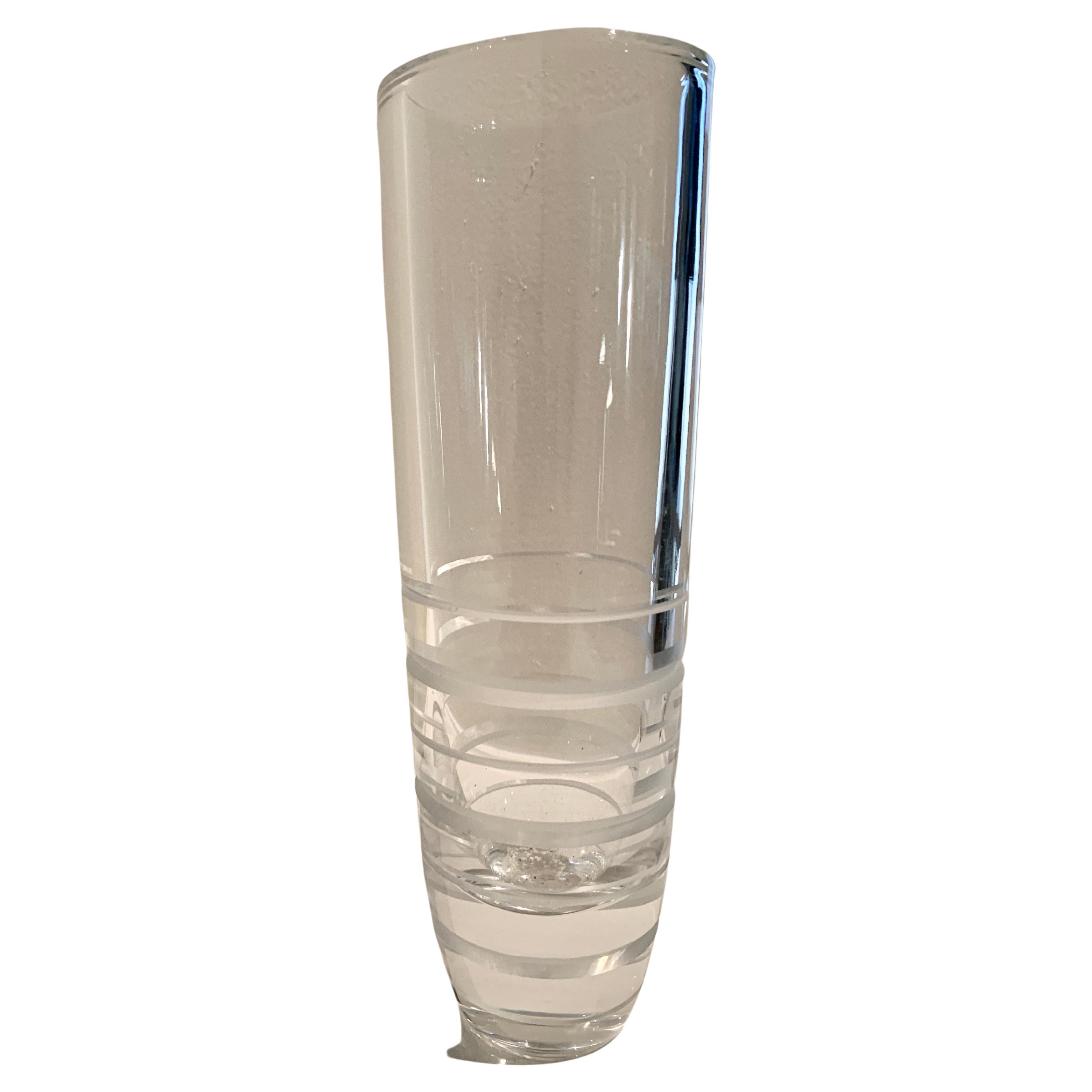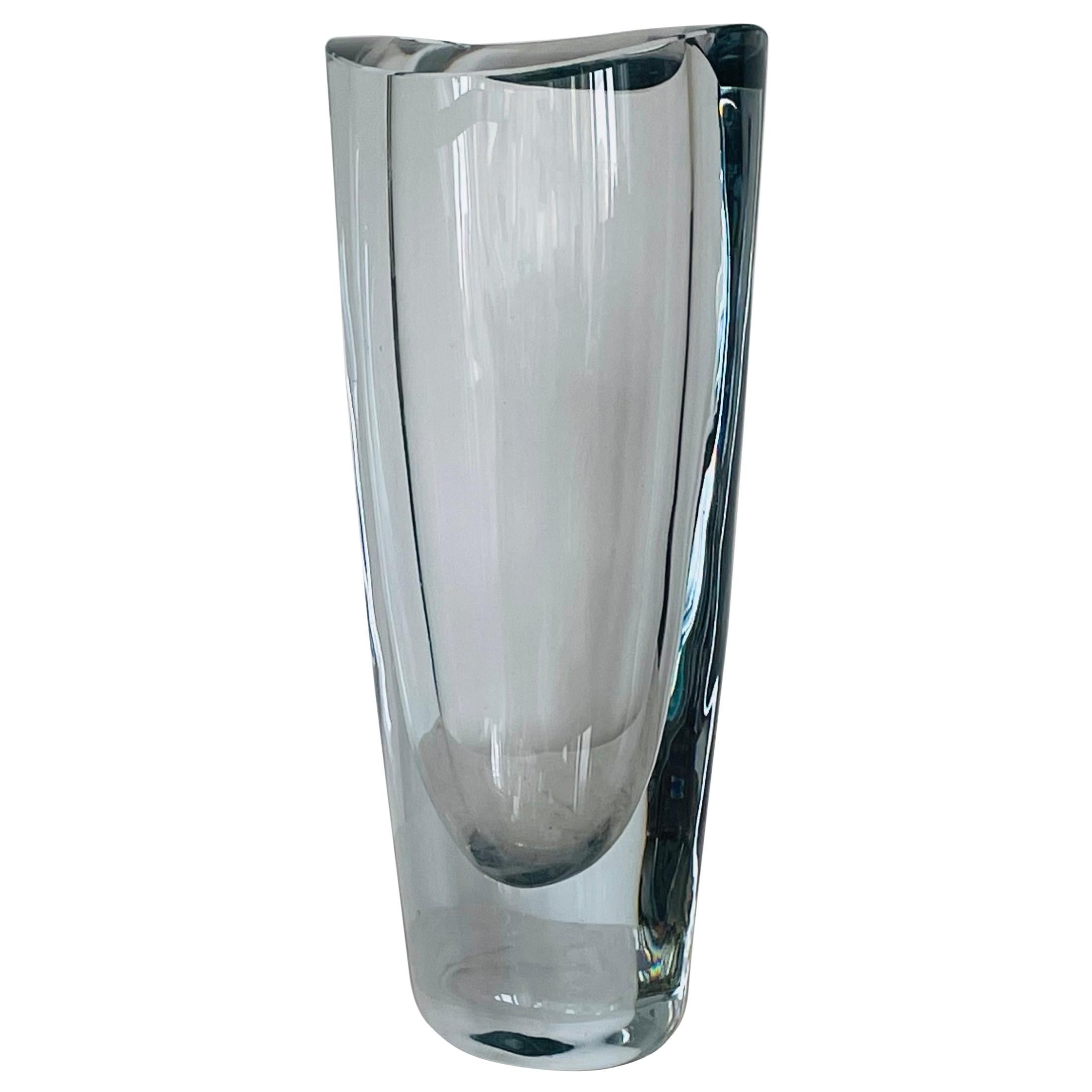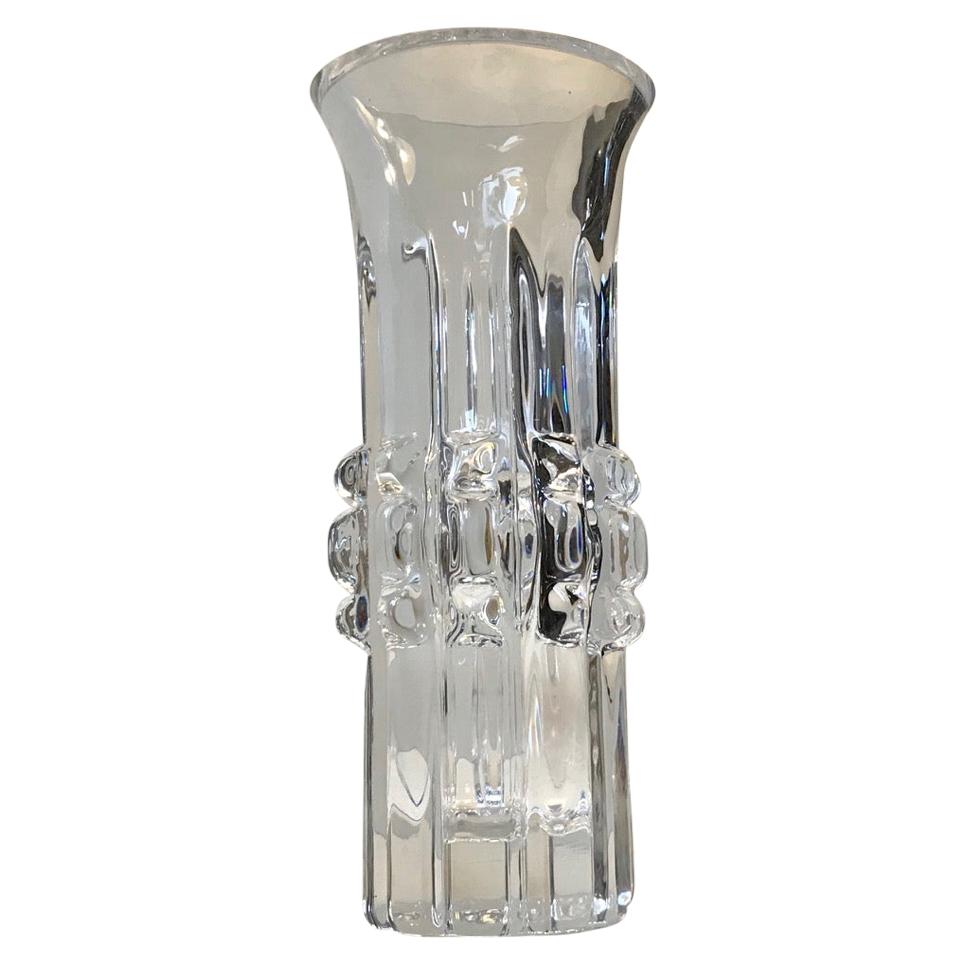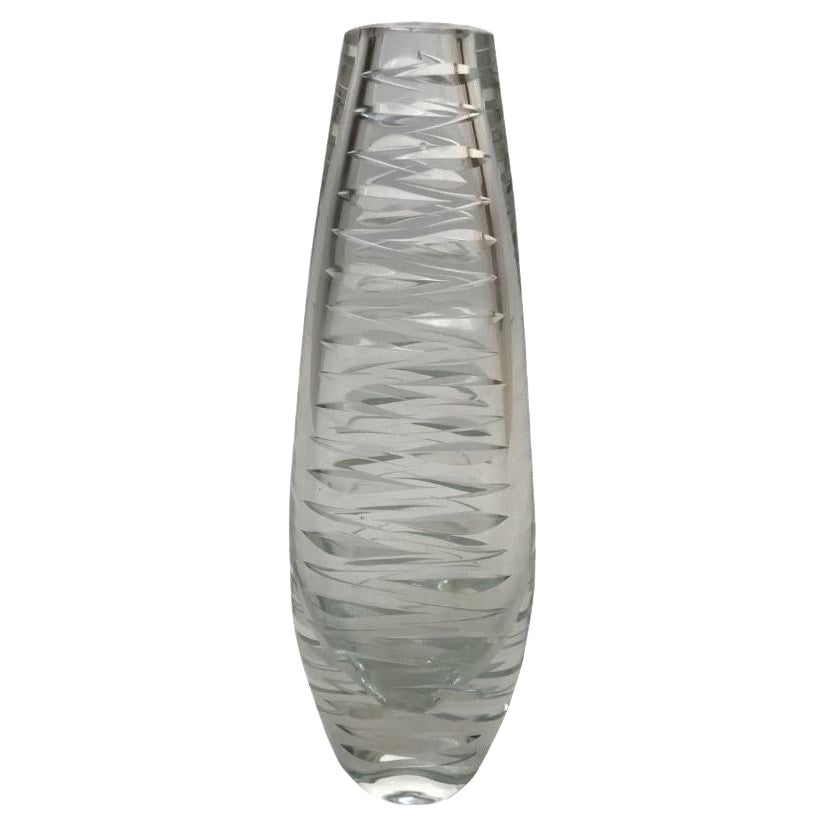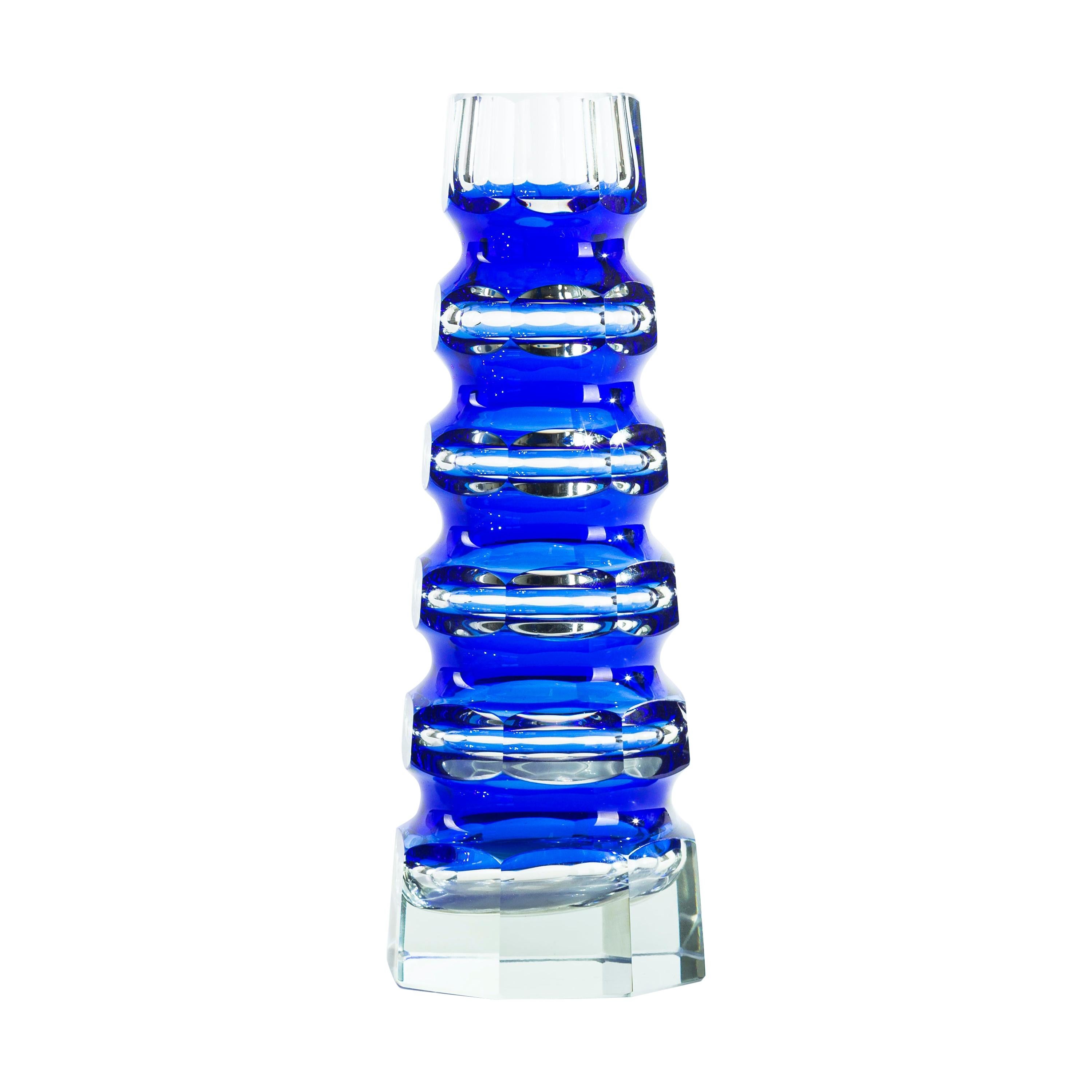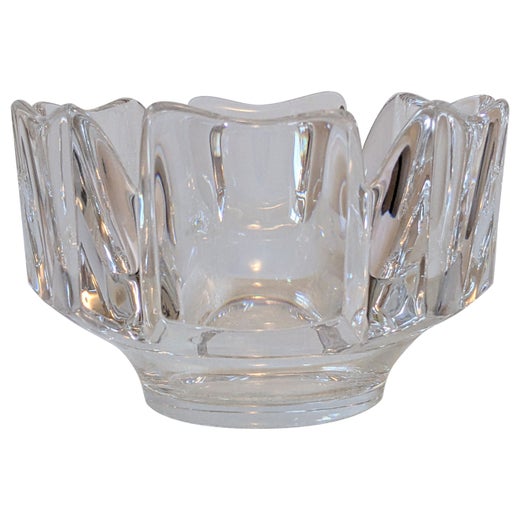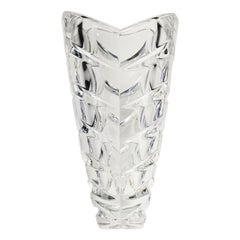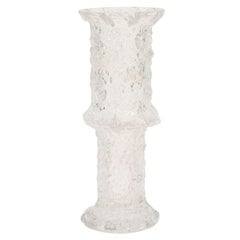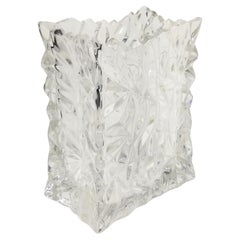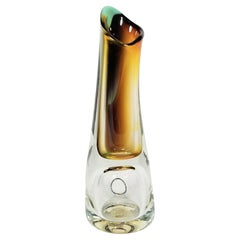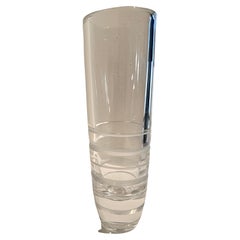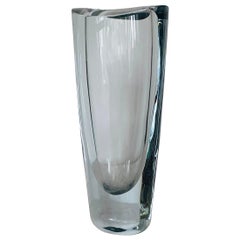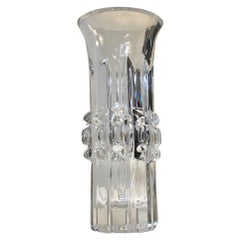Crystal Bud Vase, Orrefors, Sweden Unused
About the Item
- Creator:Orrefors (Manufacturer)
- Dimensions:Height: 8 in (20.32 cm)Diameter: 3.25 in (8.26 cm)
- Materials and Techniques:
- Place of Origin:
- Period:
- Date of Manufacture:1960s
- Condition:
- Seller Location:New York, NY
- Reference Number:1stDibs: LU92136832163
Orrefors
The Swedish design philosophy of “beautiful things for everyday life” is actualized in the vintage glassware of Orrefors. Founded in 1898, this glass manufacturer was one of the leading companies in the Scandinavian modernism movement and is revered by collectors for the fine craftsmanship and innovation of its superlative art glass.
Orrefors began making art glass — works that, distinct from mass-production pieces, are made in small numbers to showcase the skills and talents of artists and artisans — in 1913. Two of the first artists hired by the firm were Simon Gate and Edward Hald, who worked initially in the organic Art Nouveau style, and later proved adept with the geometric imagery of the Art Deco period.
Hald and Gate worked closely with glassblowers to refine traditional glassmaking methods, creating new materials such as "graal" glass. In the graal technique a design made with colored glass is encased in layers of transparent glass, preserving the image while the overall glass form is worked and shaped. Orrefors won an international following when it presented such pieces in Paris in 1925 at the Exposition Internationale des Arts Décoratifs et Industriels Modernes — the design fair whose name gave rise to the term Art Deco.
In the years following that success, Orrefors attracted more dynamic and experimental artists such as Vicke Lindstrand and Edvin Ohrström, who joined the company in the 1930s. Lindstrand and Ohstrom worked with glassblowers to create the "ariel" glass technique, an innovation that produces deeper, richer imagery that seems to morph and flow as light is refracted by the glass.
As you will see from the items offered on 1stDibs, there is a special aesthetic quality to vintage Orrefors glass. Whether a vase or a set of wine goblets, the work of this premier Swedish company represents the apex of functional artistry.
- ShippingRetrieving quote...Shipping from: New York, NY
- Return Policy
More From This Seller
View AllLate 20th Century Vases
Crystal
Vintage 1960s Finnish Mid-Century Modern Vases
Glass
Mid-20th Century German Mid-Century Modern Vases
Crystal
Mid-20th Century Vases
Blown Glass
Late 20th Century Vases
Glass
Mid-20th Century German Vases
Crystal
You May Also Like
20th Century Vases
Crystal
20th Century Swedish Modern Vases
Crystal
Vintage 1960s Swedish Scandinavian Modern Vases
Crystal
Vintage 1940s French Art Deco Vases
Crystal
20th Century Scandinavian Mid-Century Modern Vases
Glass
Vintage 1960s German Vases
Crystal
